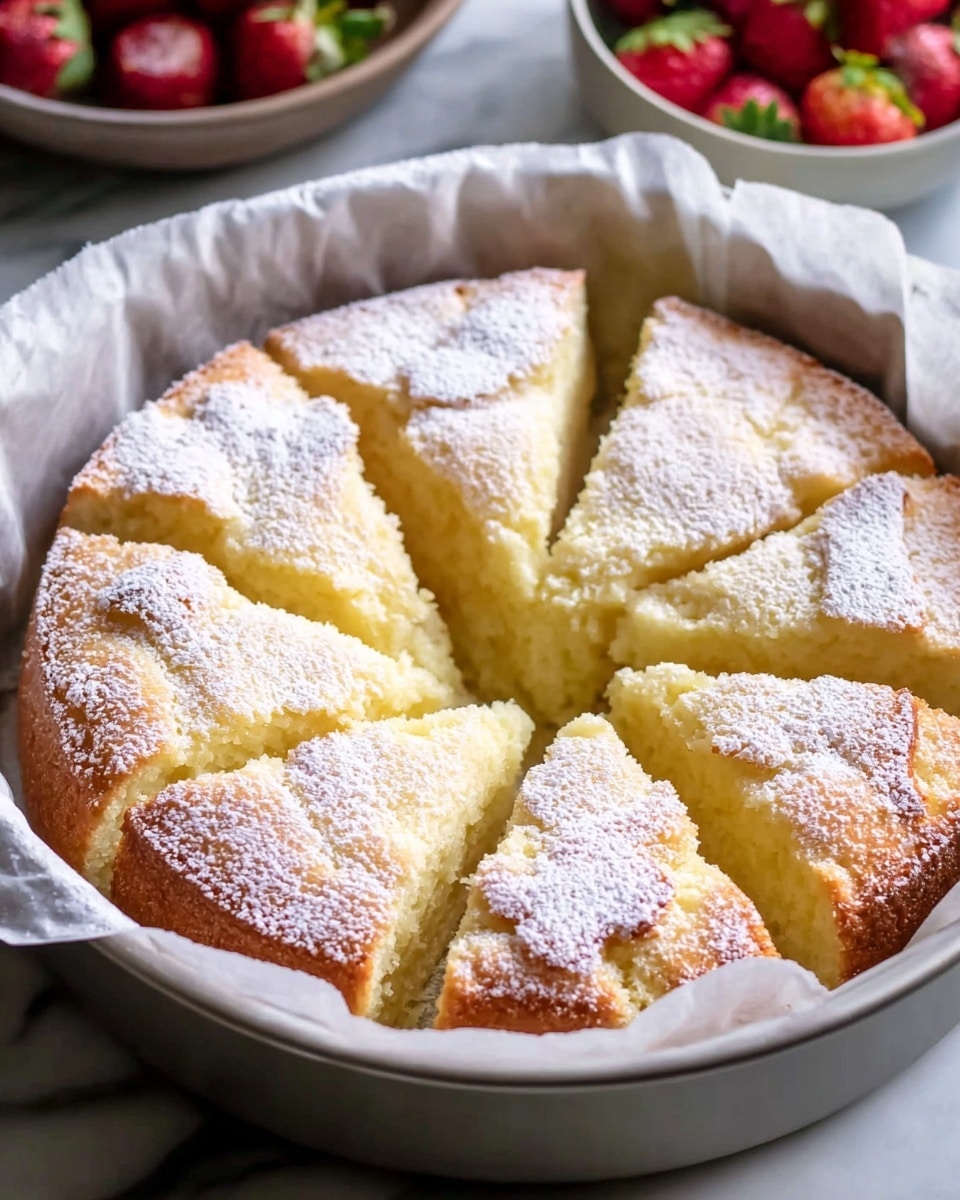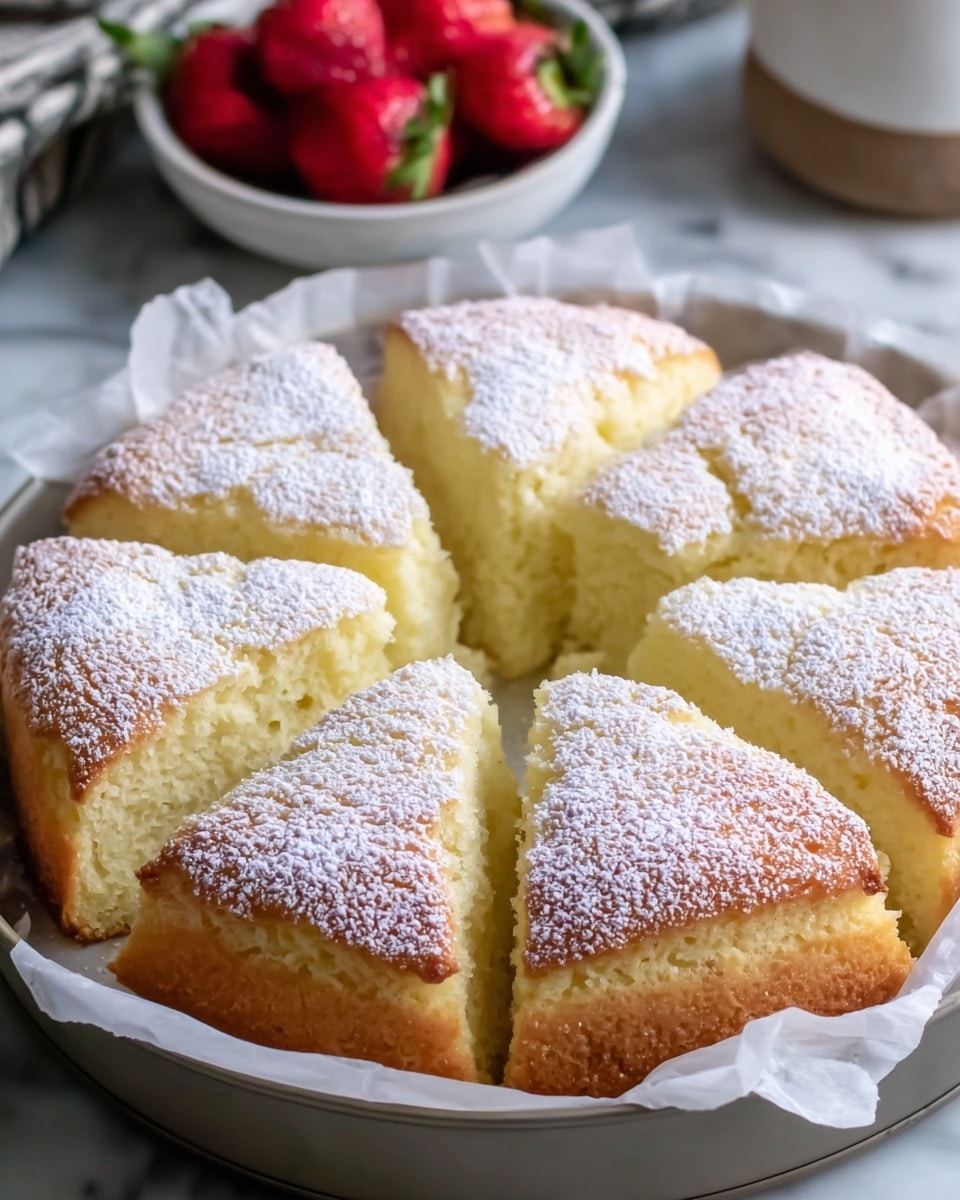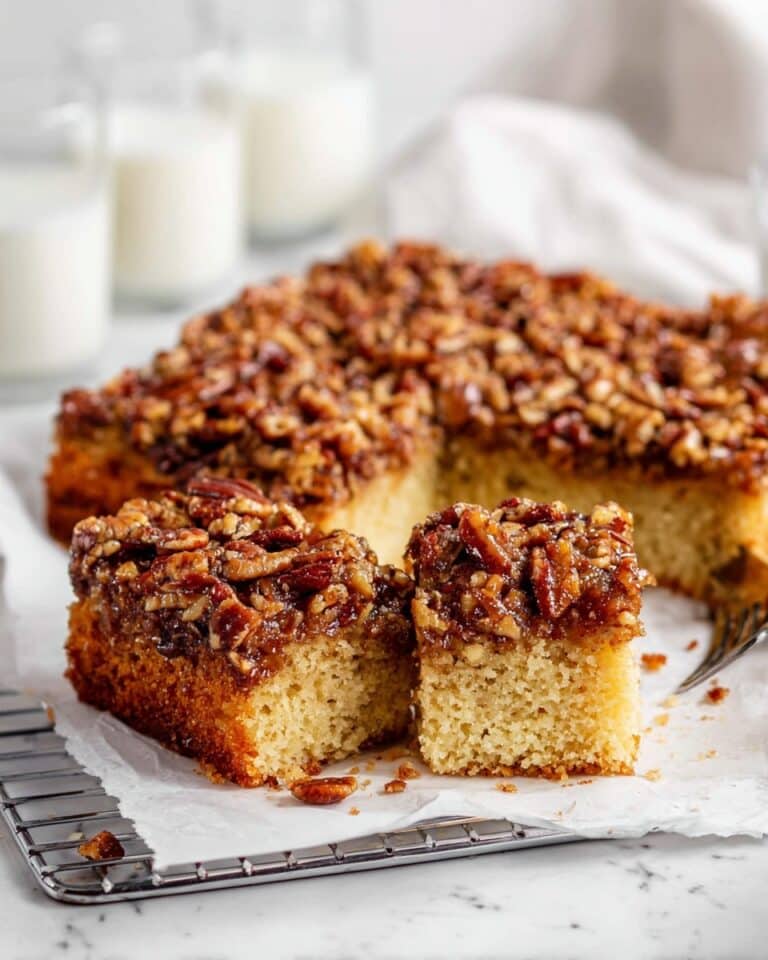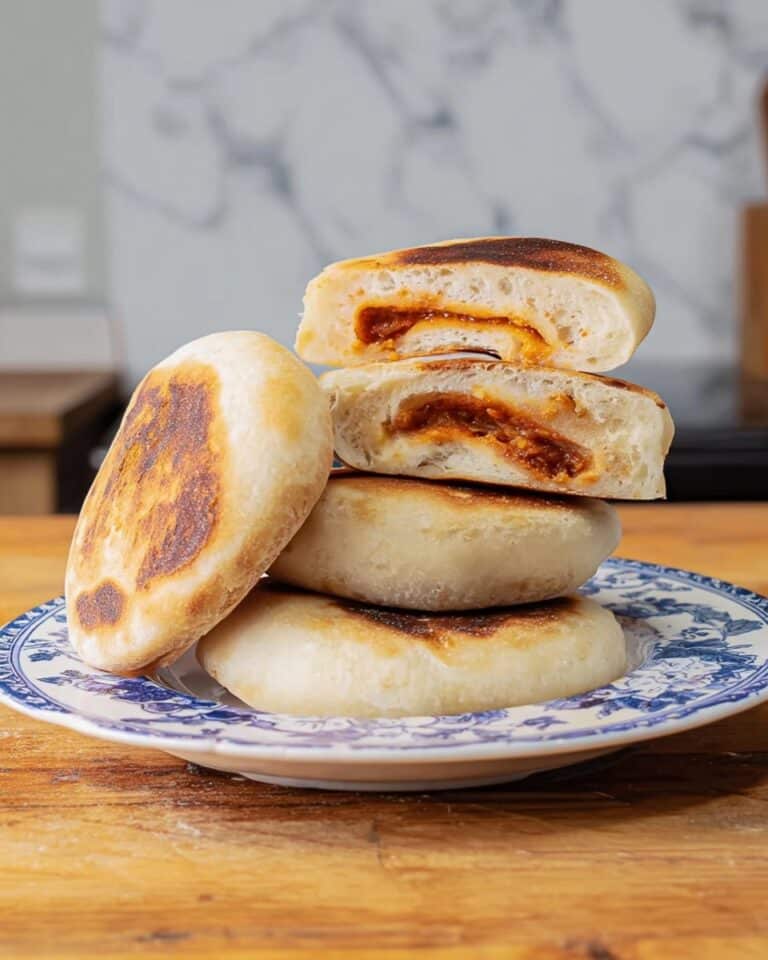Decadent French Butter Cake Recipe
If you’re on the hunt for a cake that’s buttery, moist, and just downright irresistible, let me introduce you to my Decadent French Butter Cake Recipe. This beauty has a tender crumb that practically melts in your mouth, thanks to the rich combination of butter and sour cream. I love how it manages to be elegant yet so easy to make—a real crowd-pleaser whether you’re serving it at brunch, afternoon tea, or as a dessert that steals the show.
One of the best parts about this Decadent French Butter Cake Recipe is that it feels fancy without requiring hours in the kitchen. I remember the first time I made it when friends popped over last minute, and it was the perfect solution: simple steps, predictable ingredients, and a result that tasted like you’d spent all day perfecting it. You’ll find yourself reaching for this recipe whenever you want something special that’s foolproof and utterly delicious.
Ingredients You’ll Need
Each ingredient in this Decadent French Butter Cake Recipe works in harmony to create that rich, tender texture and subtle sweetness that makes this cake so memorable. Here are a few tips to make sure you get the best results.
- Unsalted butter: Using unsalted butter lets you control the saltiness perfectly. Make sure it’s softened to room temperature for smooth mixing.
- Granulated sugar: Divided in the recipe, it adds sweetness and helps create that slight crunch on top when sprinkled before baking.
- Large eggs: Room temperature eggs blend more evenly, helping your cake rise beautifully.
- Vanilla extract: A good quality vanilla makes a noticeable difference here—it lifts the flavors without overpowering.
- Cake flour: This lighter flour keeps the cake tender and crumbly instead of dense.
- Baking powder: Essential for a nice lift and light texture.
- Salt: Just a pinch enhances the flavors and balances sweetness.
- Sour cream: Adds moisture and a subtle tang that cuts through the richness beautifully.
- Whole milk: Use it to loosen the batter slightly, making sure the cake stays soft and moist.
- Granulated sugar for topping: Sprinkled generously before baking to give you that irresistible buttery crunch on top.
- Powdered sugar (optional): For dusting after baking to add a touch of elegance.
- Fresh berries (optional): They add freshness and a pop of color that pairs wonderfully with the cake’s richness.
Variations
While I adore the original Decadent French Butter Cake Recipe just as it is, I’ve played around with a few tweaks that add a bit of personal flair—feel free to make it your own!
- Lemon zest: Adding a teaspoon of lemon zest gives the cake a bright, fresh twist that balances the buttery richness. I tried this on a sunny spring afternoon and it was a hit!
- Almond extract: Swapping half the vanilla for almond extract creates a lovely nutty note, which feels especially comforting in the cooler months.
- Dairy-free option: Use dairy-free sour cream and a non-dairy milk substitute if you’re avoiding dairy—just keep an eye on the batter consistency.
- Fruit-filled: Toss in fresh blueberries or raspberries right before baking for a juicy surprise inside. I love this version when berries are in season.
- Gluten-free: Substituting cake flour for a gluten-free baking mix works well, but I recommend adding a little xanthan gum for that perfect crumb.
How to Make Decadent French Butter Cake Recipe
Step 1: Cream the butter and sugar until fluffy
Start by beating the softened unsalted butter with about 1 cup of the granulated sugar until it’s light and fluffy—this usually takes 3 to 5 minutes with an electric mixer. This step is crucial because it traps air and gives your cake its tender crumb. Don’t rush; you want that pale, creamy texture before moving on.
Step 2: Add eggs and vanilla one at a time
Next, add the eggs one by one, mixing well after each addition so they incorporate fully. Then stir in the vanilla extract. If your eggs are room temperature, they’ll blend easier and help the batter stay smooth without curdling.
Step 3: Mix dry ingredients and combine
In another bowl, whisk together the cake flour, baking powder, and salt. Then, alternate adding the dry ingredients and the sour cream (with the whole milk) to the butter mixture. Start and finish with dry ingredients, mixing gently just until combined to avoid overworking your batter.
Step 4: Bake with a sugar topping for crunch
Pour the batter into a buttered cake pan and smooth the top. Sprinkle the remaining 2 tablespoons of granulated sugar evenly over the surface—this creates a lovely golden, crunchy crust as it bakes. Bake in your preheated oven until a toothpick inserted in the center comes out clean, usually around 40-45 minutes. Make sure not to overbake to keep it moist!
How to Serve Decadent French Butter Cake Recipe

Garnishes
I usually dust the top lightly with powdered sugar for a simple, elegant finish. Fresh berries like raspberries or strawberries add a fresh, slightly tart contrast that complements the buttery sweetness. Sometimes, a dollop of whipped cream makes it feel extra special when sharing with guests.
Side Dishes
This cake pairs beautifully with a hot cup of tea or coffee for an afternoon pick-me-up. For brunch, I love serving it alongside fresh fruit salads or a light citrusy sorbet to balance the richness. It’s been my go-to for casual gatherings and also for treats after a savory dinner.
Creative Ways to Present
For birthdays, I’ve decorated this cake with edible flowers and fresh sliced strawberries on top—instantly festive and elegant. Another favorite is serving individual slices with a drizzle of warm berry compote or a scoop of vanilla ice cream, which makes it feel like a true dessert experience.
Make Ahead and Storage
Storing Leftovers
After baking, I usually let the cake cool completely and then store any leftovers in an airtight container at room temperature for up to 2 days. It stays wonderfully moist and flavorful, but be sure to keep it covered to prevent drying out.
Freezing
I’ve had great luck freezing slices wrapped tightly in plastic wrap and then foil—just thaw them overnight in the fridge. The texture holds up well, so you don’t feel like you’re missing out on any of that buttery goodness when you pull a piece out later.
Reheating
To revive leftover cake, I pop a slice in the microwave for about 15 seconds or warm it gently in a low oven wrapped in foil. It softens up perfectly and tastes almost freshly baked—just be careful not to overheat and dry it out!
FAQs
-
Can I use regular all-purpose flour instead of cake flour?
You can substitute all-purpose flour, but your cake might be a bit denser since cake flour has less protein and creates a softer crumb. To get closer to cake flour texture, try removing 2 tablespoons of all-purpose flour per cup and replacing them with cornstarch.
-
Why is sour cream used in this recipe?
Sour cream adds moisture and a subtle tanginess that balances the sweetness, helping the cake stay tender and rich. It also reacts with the baking powder to help the cake rise nicely.
-
What’s the best way to store leftover Decadent French Butter Cake?
Store leftover cake in an airtight container at room temperature for up to two days to keep it moist. For longer storage, wrap slices in plastic and foil and freeze, then thaw in the refrigerator before reheating gently.
-
Can I make this cake dairy-free?
Yes! Substitute the butter with vegan butter and use dairy-free sour cream and non-dairy milk. Keep an eye on batter consistency, as these substitutions may affect moisture slightly, but the cake still turns out delicious.
-
How do I know when the cake is done?
Insert a toothpick or cake tester in the center; it should come out clean or with just a few moist crumbs attached. Make sure not to overbake, as this can dry out your Decadent French Butter Cake.
Final Thoughts
This Decadent French Butter Cake Recipe holds a special place in my kitchen because it strikes that perfect balance between simplicity and elegance. Every time I slice into it, I’m reminded how a few straightforward ingredients can come together to create something truly extraordinary. I’m confident you’ll enjoy making—and eating—this cake just as much as I do, whether it’s for a casual weekend treat or a special celebration. Give it a try; I think it’ll become a fast favorite in your recipe collection too!
PrintDecadent French Butter Cake Recipe
This French Butter Cake is a rich and tender dessert characterized by its buttery, moist texture and delicate crumb. Made with simple pantry ingredients like unsalted butter, sugar, eggs, and sour cream, this cake combines classic French baking techniques with a comforting flavor profile. The cake is topped with a sprinkle of granulated sugar for a subtle crunch and optionally dusted with powdered sugar, making it perfect for any occasion, whether served with fresh berries or enjoyed on its own.
- Prep Time: 20 minutes
- Cook Time: 40-45 minutes
- Total Time: 60-65 minutes
- Yield: 8 servings
- Category: Baking
- Method: Baking
- Cuisine: French
- Diet: Vegetarian
Ingredients
For the cake:
- 1 cup (226g) unsalted butter, plus extra for greasing the pan
- 1¼ cups (250g) granulated sugar, divided
- 4 large eggs, room temperature
- 2½ teaspoons vanilla extract
- 1¼ cups (156g) cake flour
- 1½ teaspoons baking powder
- ½ teaspoon salt
- ½ cup sour cream, room temperature
- 2 tablespoons whole milk
For finishing:
- 2 tablespoons granulated sugar (for topping)
- Powdered sugar for dusting (optional)
- Fresh berries for serving (optional)
Instructions
- Preheat and prepare the pan: Preheat your oven to 350°F (175°C). Grease an 8-inch (20cm) round cake pan with butter and lightly dust it with flour or line it with parchment paper to prevent sticking.
- Cream butter and sugar: In a large mixing bowl, cream the unsalted butter (at room temperature) with 1 cup of the granulated sugar using an electric mixer until the mixture is light, fluffy, and pale in color. This typically takes about 3-5 minutes.
- Add eggs and vanilla: Add the eggs one at a time, beating well after each addition to ensure full incorporation. Then mix in the vanilla extract until combined and smooth.
- Sift dry ingredients: In a separate bowl, sift together the cake flour, baking powder, and salt to ensure even distribution and a lighter texture.
- Combine wet and dry ingredients: Gradually add the sifted dry ingredients to the creamed mixture in batches, alternating with sour cream and milk. Start and end with the dry ingredients. Mix gently after each addition to keep the batter smooth and avoid overmixing, which can make the cake tough.
- Transfer and top: Pour the batter evenly into the prepared cake pan, smoothing the surface with a spatula. Sprinkle the remaining 2 tablespoons of granulated sugar evenly over the top of the batter for a sweet, crunchy finish.
- Bake: Bake in the preheated oven for 40-45 minutes, or until the cake is golden brown on top and a toothpick inserted into the center comes out clean.
- Cool and serve: Remove the cake from the oven and allow it to cool in the pan for about 15 minutes before transferring it to a wire rack to cool completely. Optionally dust with powdered sugar before serving and accompany with fresh berries for a delightful presentation.
Notes
- Room temperature ingredients help to create a smooth, well-emulsified batter, so make sure butter, eggs, and sour cream are not cold.
- If you don’t have cake flour, you can make a substitute by removing 2 tablespoons of all-purpose flour per cup and replacing it with cornstarch for a similar tender texture.
- Be careful not to overmix the batter once the flour is added, as this can develop gluten and make the cake dense.
- The granulated sugar on top creates a slight crust that adds a nice texture contrast to the tender crumb.
- Fresh berries add a refreshing tang and color contrast when serving.
- Store leftover cake in an airtight container at room temperature for up to 3 days or refrigerate for up to 5 days.








